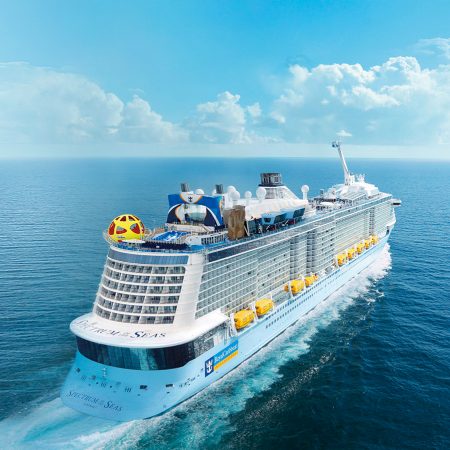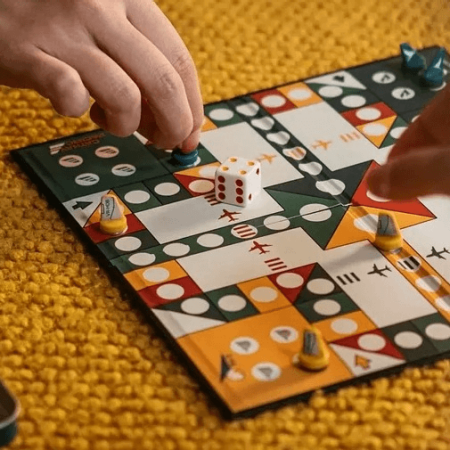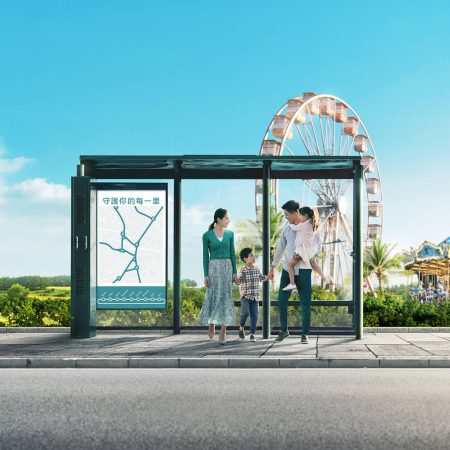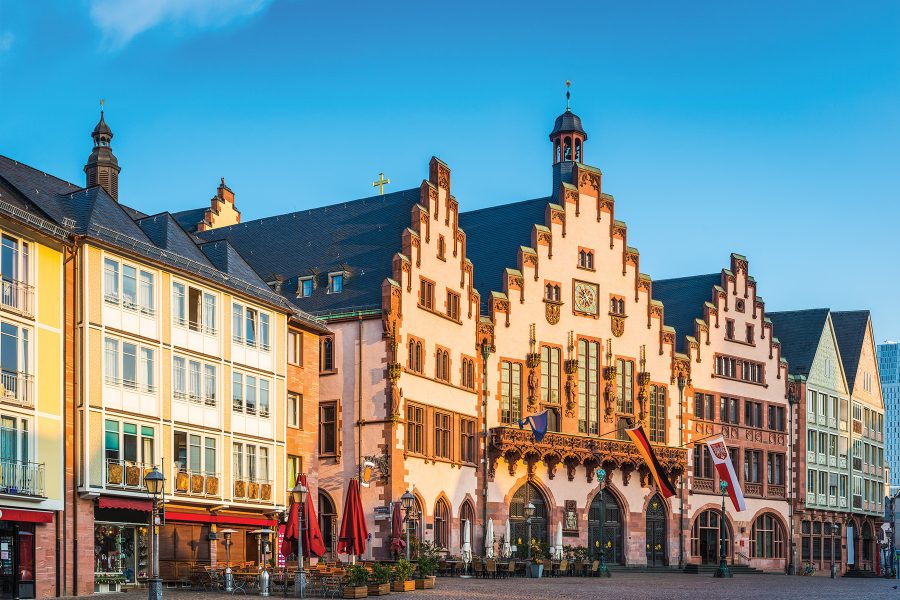Ice cream pastel façades, grey slate walls and red sandstone details mark out the gabled homes that face onto Hühnermarkt. In the centre of the square stands an imposing fountain dedicated to author and satirist Friedrich Stoltze; displays in a museum window depict the eerie German folktale Struwwelpeter. A gigantic giraffe stuffed toy outside the toy shop Steiff peers curiously at passersby as church bells chime.
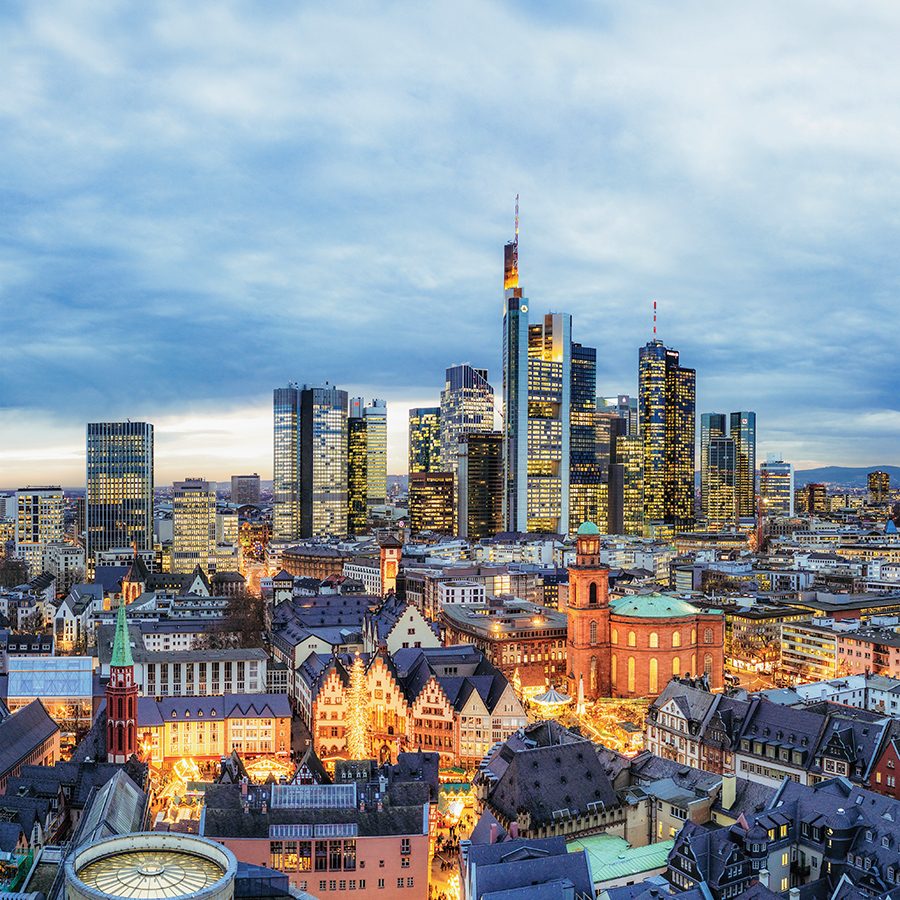
Credit: georgeclerk/Getty Images
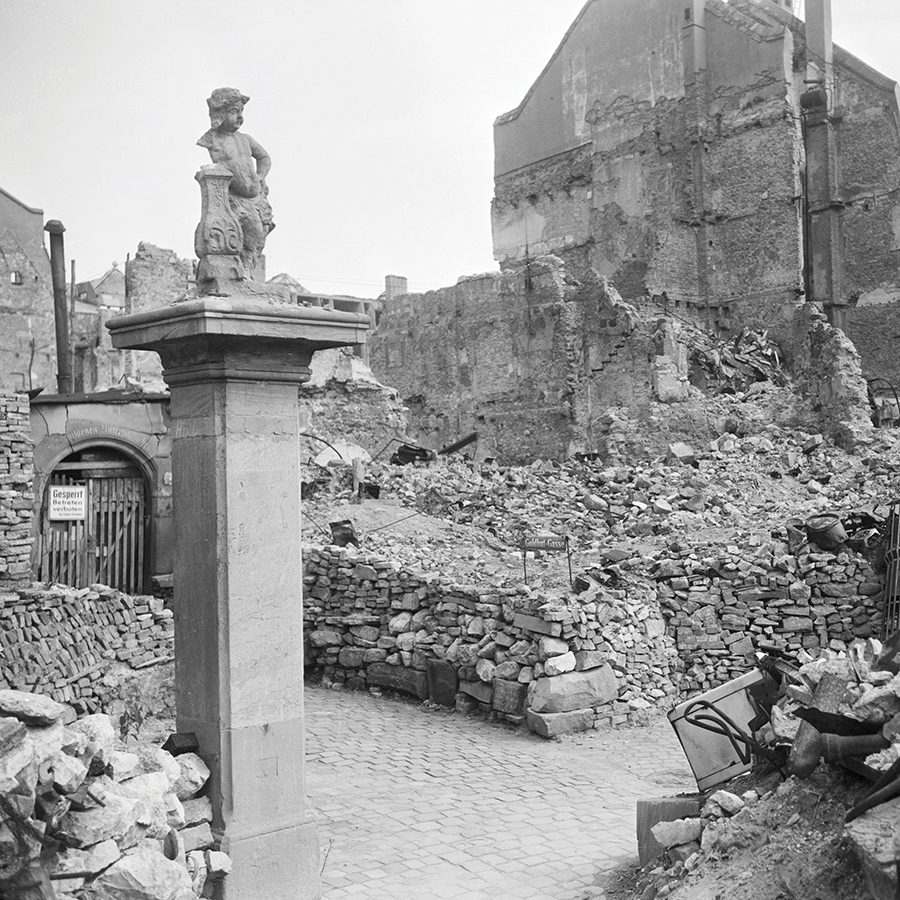
Credit: Bettmann/Getty Images
It’s a moment of peace in Germany’s financial capital Frankfurt, presided over by the towering cathedral just a couple of streets away. But I’m struggling with the cognitive dissonance. Just moments ago, Paul-Martin Lied, a former architect and my tour guide, from Guiding Architects , had shown me a photo of the very square we’re standing in.
Eighty years ago, it was nothing but bombed-out rubble.
Hühnermarkt is just one part of Frankfurt’s “Neue Altstadt” – the “new old town”, which has reinvented itself over the years since it was destroyed during WWII. In one of the densest parts of Frankfurt at the time, half- timbered houses stood cheek-by-jowl in packed quarters.
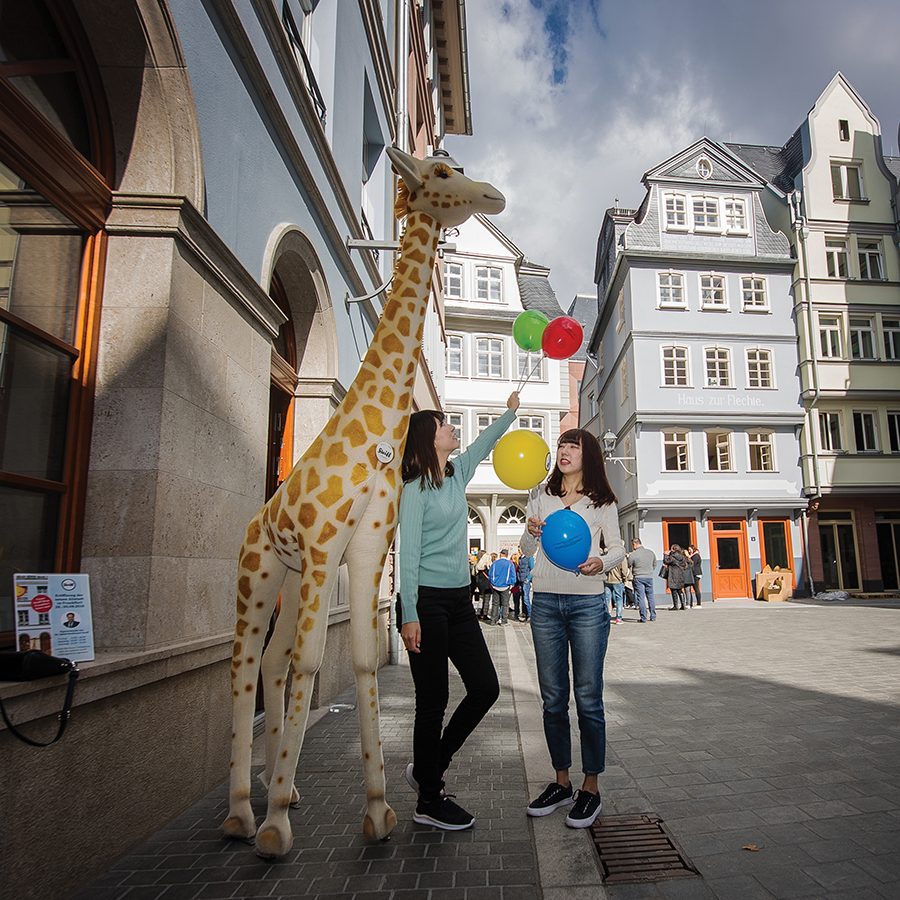
Credit: picture alliance/Getty Images
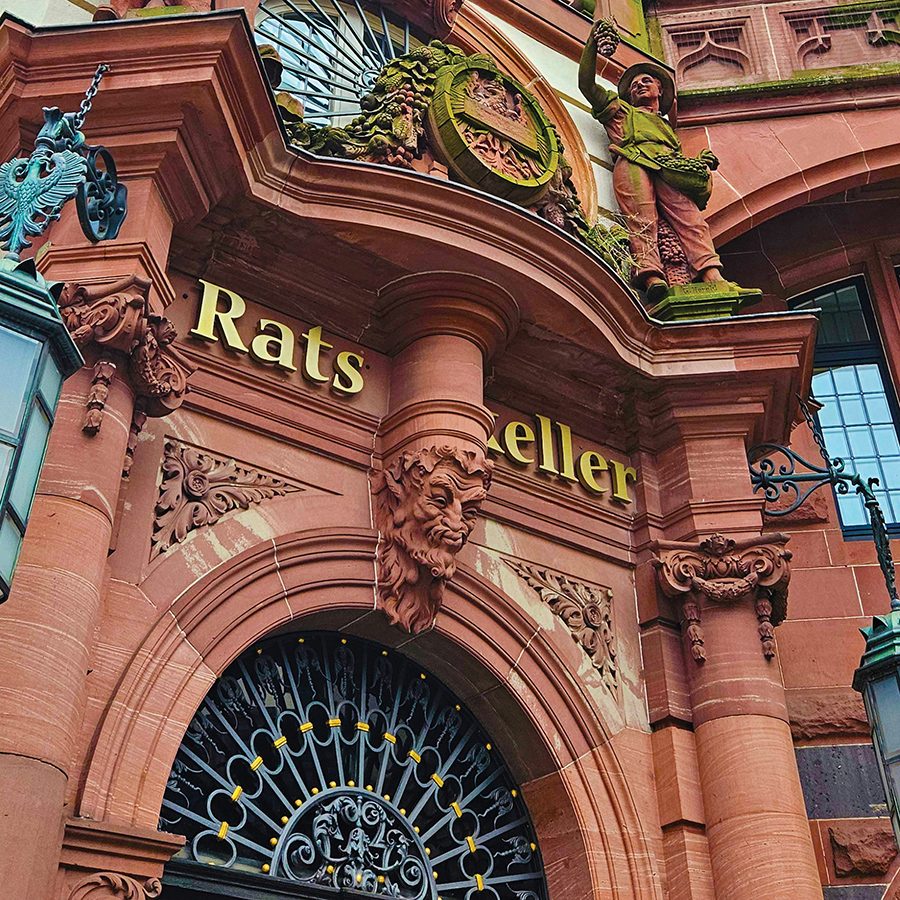
Credit: Megan Hills
“From one side of the street to the other, the streets were so narrow that people could shake hands between houses,” Lied tells me.
Neue Altstadt, officially opened to the public in 2018, is the area’s latest incarnation. Historically inspired façades stand alongside modern tributes, while new narrow lanes and courtyards remain true to the old streets of Altstadt. How is it possible to make the new old again, without feeling inauthentic?
Urban architecture has always straddled the fine line between functionality and design. When the old town was destroyed in 1944, the latter had to give way to the former. “When I was a little child in the ’50s, everyone tried to forget the bombing. And there was a big need to build housing,” recalls Lied.

Credit: AM C/Getty Images
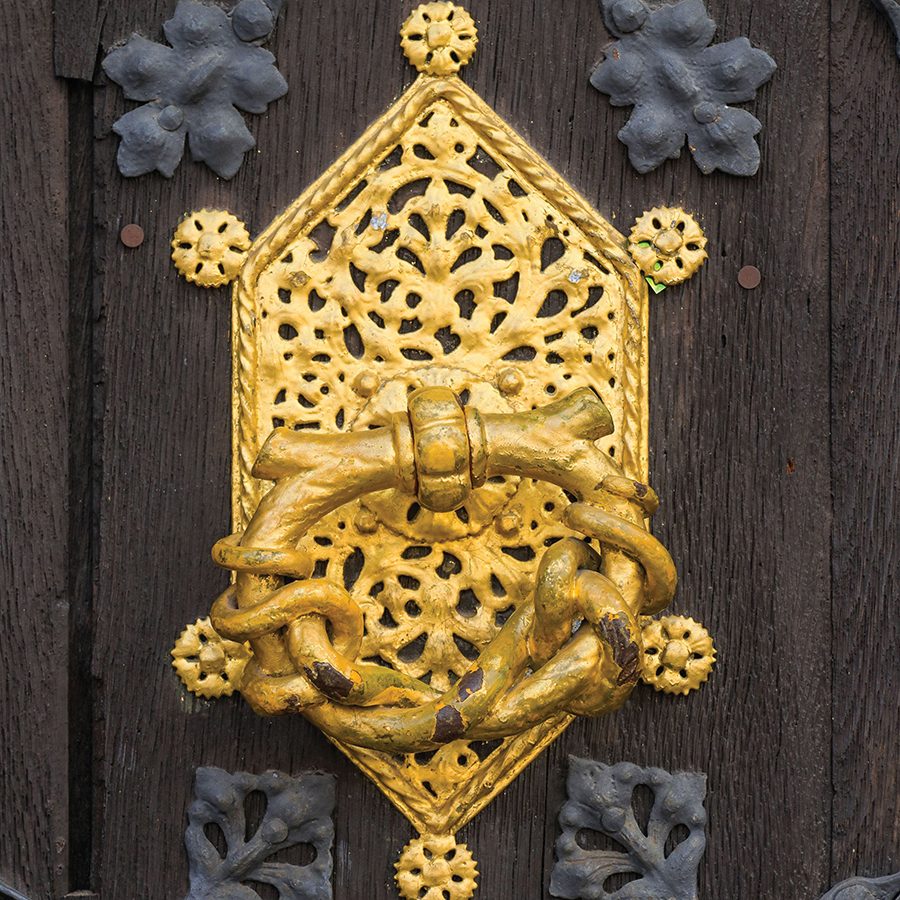
Credit: Bildagentur online/Getty Images
What resulted can still be seen on the fringes of Neue Altstadt, in the functional apartment blocks lining the less-picturesque half of Römer Square. However, even here, red sandstone ground floor frontages stand out in comparison to the whitewashed floors above.
“Red sandstone is very traditional in Frankfurt; it could be brought in easily by the River Main from the east,” Lied explains.
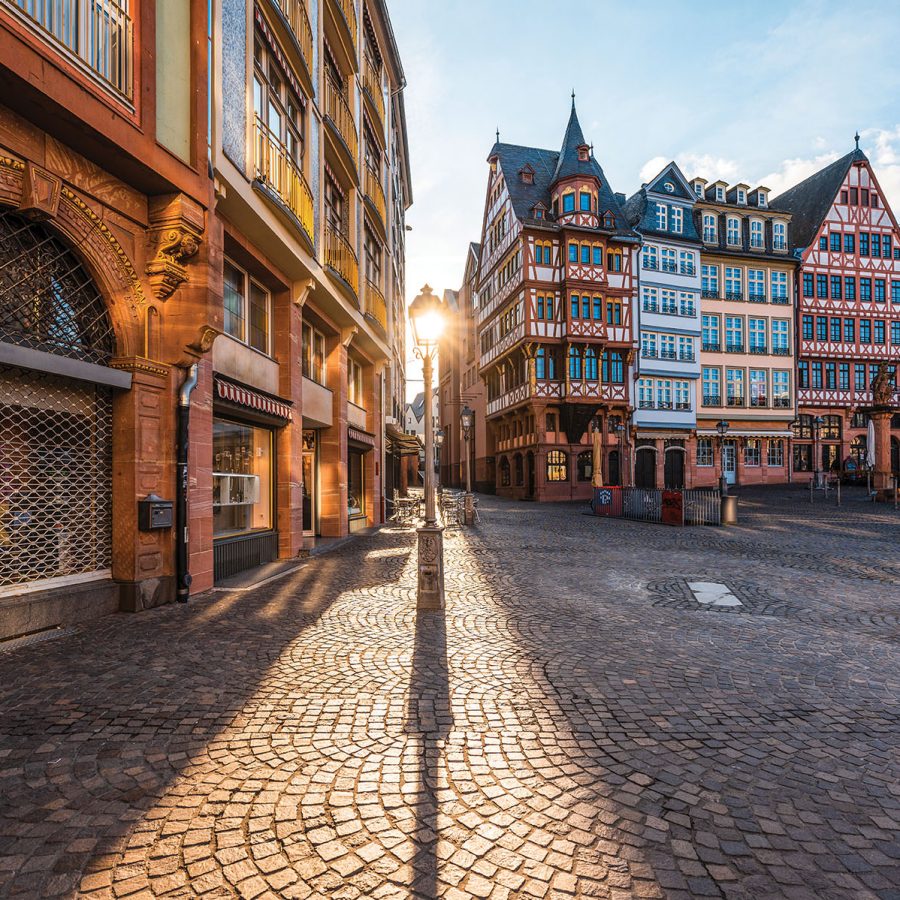
Credit: © Marco Bottigelli/Getty Images
As part of Germany’s internal reckoning in the post-war years, the architecture moved away from the half-timbered, gabled homes which had become synonymous with German nationalism.
But as time passed and Frankfurt modernised and became wealthier, the people started to look once again at the Altstadt. The unpopular Technical Town Hall, a brutalist office block, was torn down. In 2007, Frankfurt’s city councillors finally agreed to reconstruct the Altstadt.
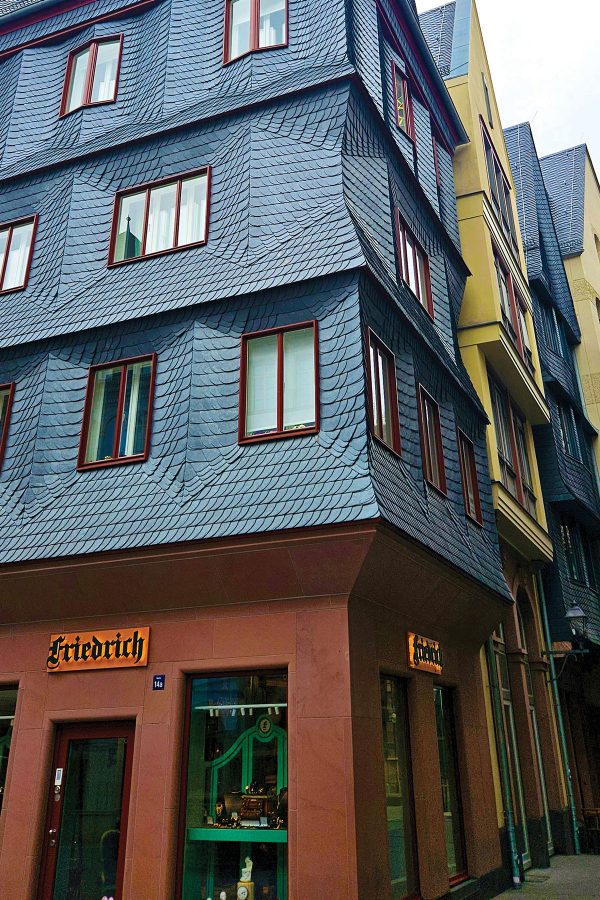
Credit: Megan Hills

Credit: picture alliance/Getty Images
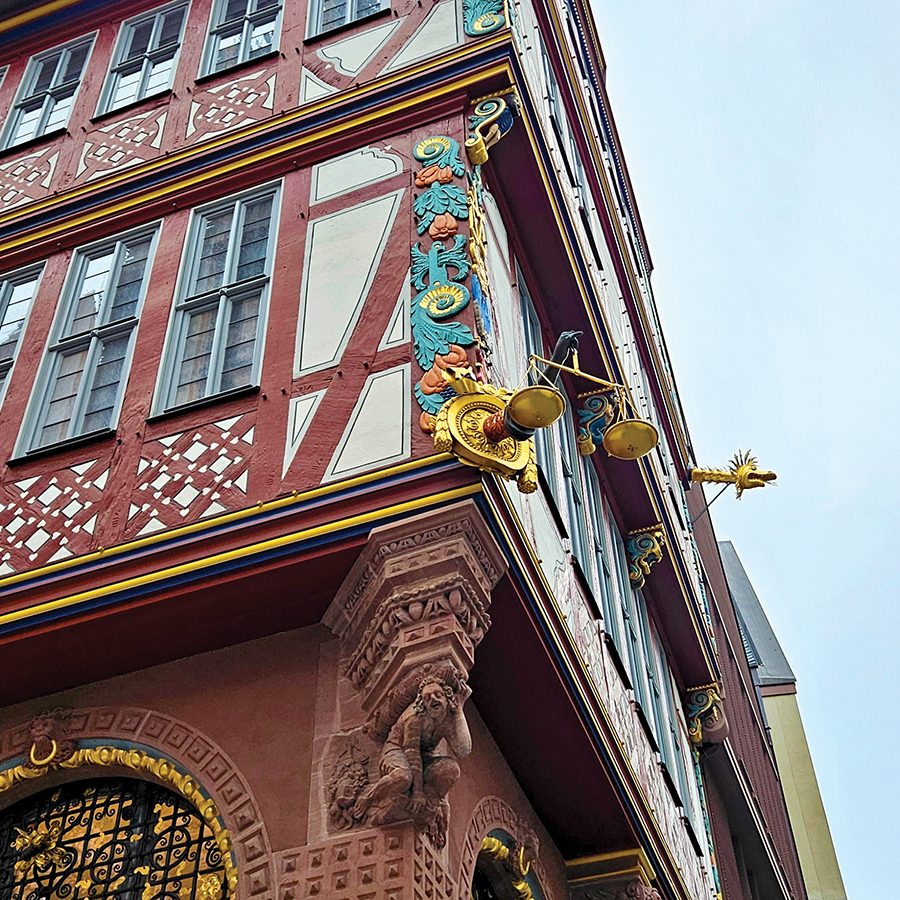
Credit: Rainer Lesniewski/Getty Images
It’s hard to recapture the past, especially when so much of it has been lost to time. Some historic buildings of the former old town were heavily documented, allowing for mostly faithful reconstructions. Many, however, remained giant question marks, which led to a compromise: creative reconstructions.
The city launched a competition for architectural firms to create Neue Altstadt – by combining both modern interpretations of the gabled house and traditional reconstructions. Rules were put into place for the competition, specifying that traditional details like red sandstone ground floor exteriors and gabled roofs were to remain part of the buildings.
Fifteen creative reconstructions and 20 brand new gabled buildings are now scattered throughout the district, blending Frankfurt’s historical past with the contemporary environment.
“Nowadays, we like to romanticise the Old Town,” Tommy Jepp , a tour guide from the Frankfurt Tourism Board , tells me. He explains that it’s likely that some of the half-timbering we see in Neue Altstadt probably wasn’t visible in the past, as it would have been covered in plaster or slate. “But we like to see the wood,” he says.
The Goldene Waage (“golden scales”) building stands out in particular: a former merchant��’s home, gilded with a half-timbered aspect meticulously crafted by architect Jochem Jourdan. An arm protrudes from the building, holding the eponymous scales, which hang over a bustling coffee shop and museum. Nearby, a charcoal-hued building almost entirely covered in natural slate tiles pays homage to traditional roof slating, giving it an armadillo-like texture: a modern take on the past.
Walking through Neue Altstadt’s streets, you feel hardly any incongruity between reconstructions and modern creations. Soft, muted colour palettes and the seamless zig-zag of roofs all blend together, creating an area that feels deeply familiar and true to Frankfurt’s spirit of progress.
Some naysayers originally fought against Neue Altstadt’s construction, concerned about the 200 million euro cost and the fear that it would be transformed into a kind of inauthentic theme park, a concern that comes up frequently in discussions of the area.
It’s easy to see how Neue Altstadt could have swung into that realm. Less capable hands might have transformed it into a purely tourist-oriented venture, filled with countless homogenous souvenir shops and costumed tour guides. Luckily, Neue Altstadt still feels like it belongs to the city and its residents. The gabled buildings are homes, while carefully curated shops with sliding-scale rents are boutiques for independent designers and wine bars – and there’s not a single souvenir keyring or postcard to be seen.
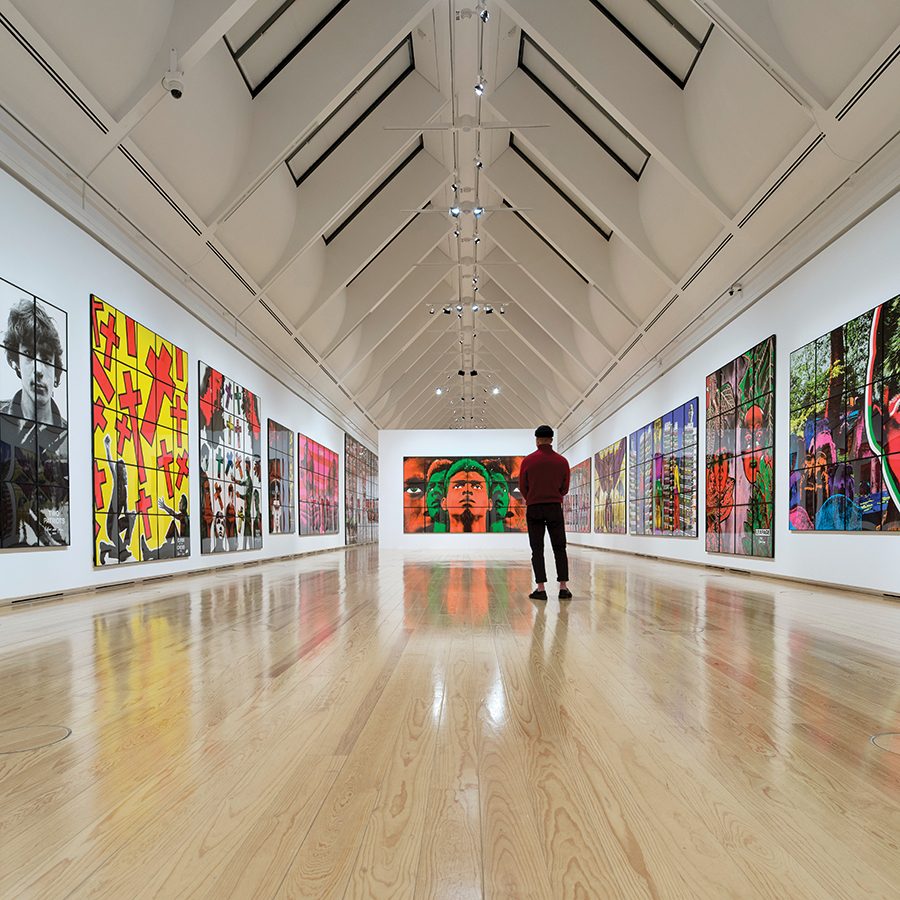
Credit: Norbert Miguletz
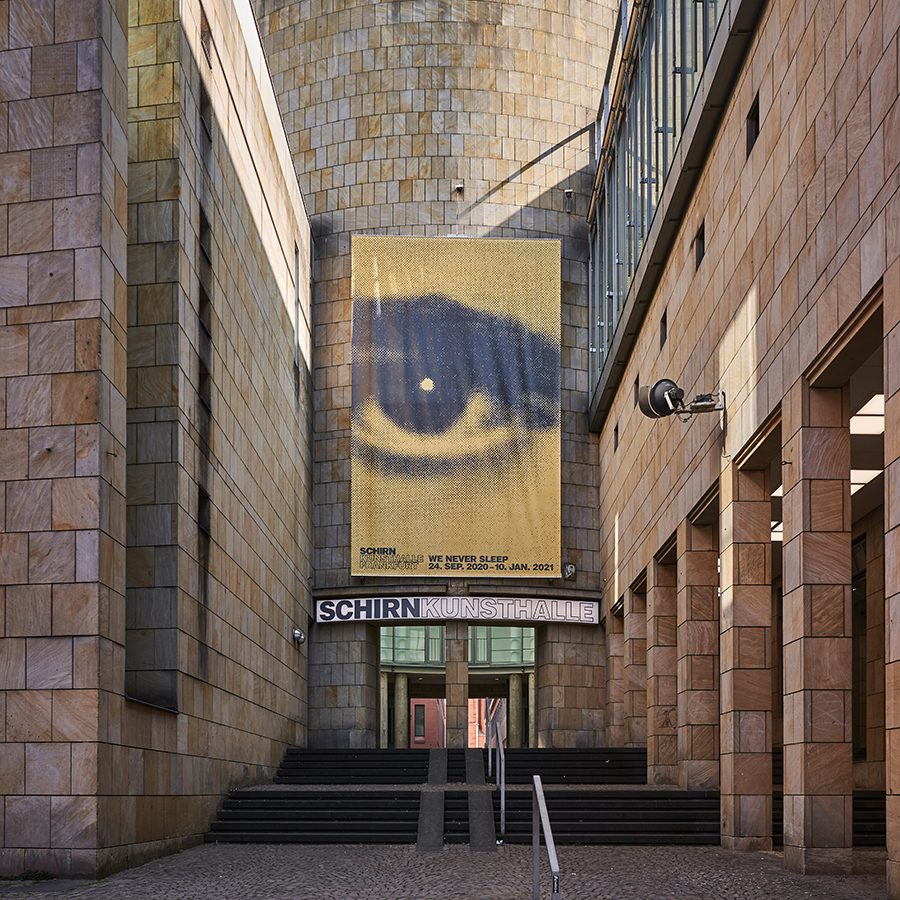
Credit: Norbert Miguletz
It’s of course a draw for tourists, but residents frequently pass through on their way to the financial district and the towering Frankfurt Cathedral or to the postmodern yellow sandstone Schirn Art Museum.
Jepp chuckles as he points out the gigantic stuffed toy giraffe standing outside the Steiff store. “Does it look like Disneyland because they put this here?” he says. “Well, I don’t care.”
Has Neue Altstadt made the old new again? It’s a question that’s less interesting to me the more time I spend here. The area certainly doesn’t feel like a carbon copy of the past or something inauthentic.
More inspiration
Frankfurt travel information
- China – the Chinese Mainland, Hong Kong SAR, Macao SAR and Taiwan Region
- Hong Kong SAR - English
- Chinese Mainland (China) - English
- Taiwan, China - English
- 香港特別行政區 - 繁體中文
- 中国內地 - 简体中文
- 中國台灣 - 繁體中文
- Africa
- South Africa - English
- Asia
- Bangladesh - English
- Korea - English
- Singapore - English
- Cambodia - English
- 한국 - 한국어
- Sri Lanka - English
- India - English
- Malaysia - English
- Thailand - English
- Indonesia - English
- Maldives - English
- ประเทศไทย - ภาษาไทย
- Indonesia - Bahasa Indonesia
- Myanmar - English
- Vietnam - English
- Japan - English
- Nepal - English
- Việt Nam - tiếng Việt
- 日本 - 日本語
- Philippines - English
- Australasia
- Australia - English
- New Zealand - English
